Wishing everyone happy holidays and a joyful New Year from the Healthify team. Don't forget to Slip, Slop, Slap and Wrap!
COVID-19 positive – care at home for adults
Key points about care at home for adults who are COVID-19 positive
- If you have been diagnosed with COVID-19, or think you might have COVID-19, you may have questions or concerns about when to seek medical advice and how to manage your symptoms.
- This page will provide you with a simple guide.
- Most people who get COVID-19 have mild symptoms. It is important to monitor your symptoms and talk with your healthcare team if you have any concerns.
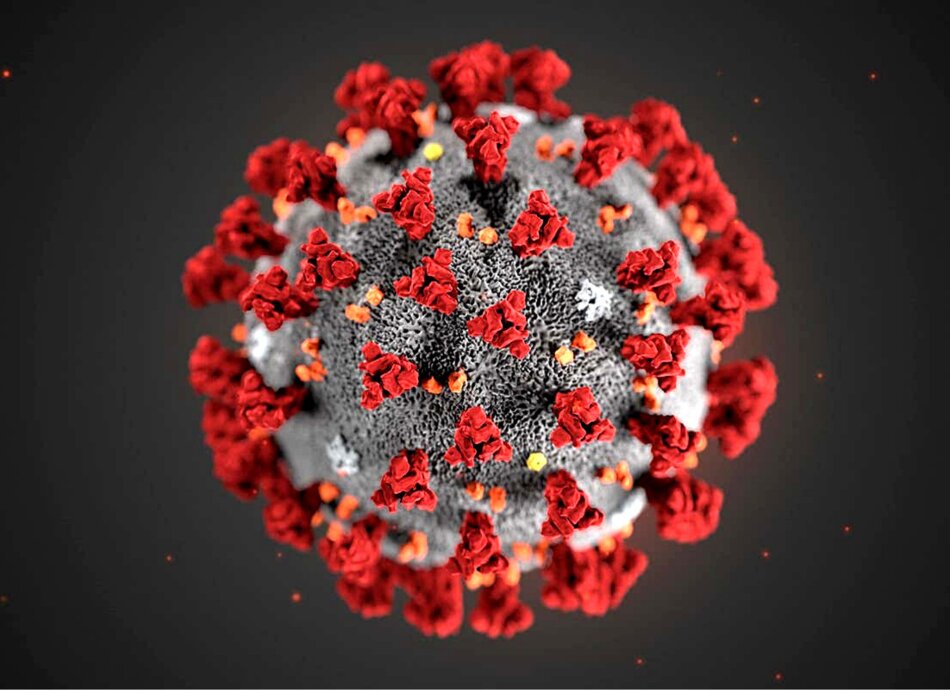
|
Call 111 if you:
|
|
Call your healthcare team if:
|
|
You may experience very mild or no symptoms.
|
Note: Some people will have to pay for COVID-related visits to their healthcare provider. COVID care will still be free for you if you:
- have a high-risk medical condition
- are Māori or Pacific Peoples
- have a disability
- are aged 65 years or older
- meet the criteria for antiviral medicine.
Most people will be able to manage their symptoms and recover at home. However, if you need to go to hospital because of COVID, hospital care will remain free.
If you need help, contact your healthcare provider for advice or call Healthline 0800 611 116.
Being monitored at home simply means you record your own results and how you are feeling (symptoms). A member of your healthcare team may stay in touch with you to see how you are doing.
It is important you keep track of your symptoms and write them in your diary, even when you are feeling okay. It's helpful to have this information recorded accurately so you can talk to your healthcare provider about your symptoms.
Things you will need to record may include:
- your temperature (if you can)
- your pulse oximeter readings
- your heart rate (pulse)
- how you are feeling
- how your breathing is
- any new symptoms you have.
Apps reviewed by Healthify
You may find it useful to look at some Symptom trackers.
Most people will have mild COVID-19 symptoms for up to 2 weeks. Symptoms tend to appear around 2–5 days after you are infected but can take up to 14 days to show.
Days 1–3
Early symptoms of COVID-19 vary widely.
- It can start with a tickle in your throat, a cough, fever or headache. You may also feel short of breath or a little pressure in your chest.
- Sometimes it begins with a bout of diarrhoea (runny poo).
- You may feel tired and/or may lose your sense of taste and smell.
- You may experience some or none of these symptoms.
Even if you have a mild COVID-19 infection, avoid running, workouts, weights and high impact activities until you’ve been cleared by your healthcare team.
Days 4–6
These are important days to be more aware of your symptoms. This is when lung (respiratory) symptoms may start to get worse, especially for older people and people who have other conditions like high blood pressure, obesity or diabetes.
- You may start to feel worse and may have aches, chills, cough and an inability to get comfortable.
- Some younger people may develop rashes, including itchy red patches, swelling or blistering on your toes or fingers.
Days 7–8
- For people with mild illness, the worst is generally over after a week.
- Some people may get worse at this point, or start to feel better briefly then take a turn for the worse.
- If you start to feel worse, contact your healthcare team.
Days 8–12 (week 2)
Continue to monitor your symptoms and record them in your diary.
- You may feel better sleeping on your front/stomach or side (see graphic below).
- If you start to feel worse, contact your healthcare team.
Days 13–14
- Most people will feel better by now. Some people feel more tired than usual.
- A slow return to activity is advised.
- If you have ongoing severe symptoms, your healthcare team will advise you what to do.
- This is why recording your symptoms is so important.
If you have a higher risk of needing to go to hospital because of your age (anyone aged 65 years or older and Māori or Pacific Peoples aged 50 years or older) or long-term conditions, you may be eligible for COVID-19 antiviral medicines. Contact your general practice or check on Healthpoint(external link) for a pharmacy near you where you can get COVID-19 medication without a prescription.
In addition your healthcare team may suggest the following medicines to ease your symptoms.
- Aches and pains: Paracetamol or ibuprofen to help with fever, headaches and body aches.
- Blocked or runny nose, or cough: Nasal sprays, decongestants, lozenges or cough mixtures.
- Sore throat: Suck a teaspoon of honey or gargle with salt water. You can also try using a gargle, throat spray or pain-relief (anaesthetic) lozenges.
- Vomiting (being sick) and diarrhoea (runny poo): The most important thing is to drink plenty of fluids, to avoid dehydration.
Read more about how to manage your symptoms if you are COVID-19 positive.
Note: When you have COVID-19, the physical symptoms of the illness may be obvious and are important to monitor, but taking care of your mental health and wellbeing is also important.
COVID-19 research from other countries has shown that changing your body position when resting can be helpful to ease your breathing. This increases the flow of oxygen to your lungs and improves your comfort. Rather than lying only on your back, try resting on your stomach and on your side.
Sitting upright in a chair is also useful and may be more comfortable after drinking or eating. Change position every 30 minutes to 2 hours, rotating as below.
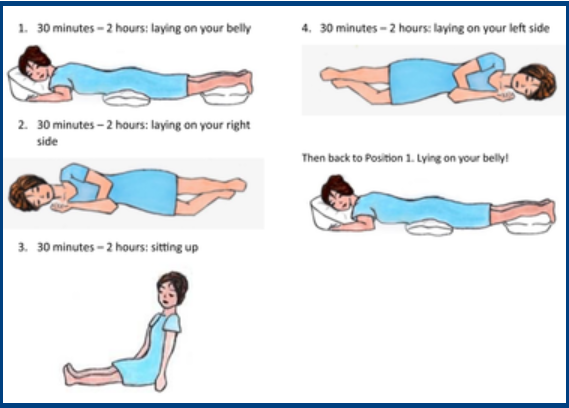
Image credit: Society for Academic Emergency Medicine
Learn more about how to manage your breathing with COVID.
Apps reviewed by Healthify
You may find it useful to look at some Self-management and healthy living apps and Breathing apps.
Even if you had a mild COVID-19 infection, avoid running, strenuous exercise and high impact activities until you’ve been cleared by your healthcare team. Healthcare professionals advise a slow, gradual return to activity. People with severe symptoms and people who needed extra treatment due to low oxygen levels may still feel unwell and tired. It may take some time to recover. Read more about returning to exercise after having COVID.
Everyone will have a different experience in their recovery from COVID-19. Some people may recover in days, some in weeks. For others, it could be months. But although each case is unique, people recovering from more severe symptoms are likely to face a longer recovery period. Learn more about long COVID.
Apps
Breathing apps
Symptom trackers
Resources
Covid-19 your symptom diary [PDF, 652 KB] Healthify He Puna Waiora, NZ, 2021
Covid-19 your health and symptom diary [PDF, 615 KB] Healthify He Puna Waiora, NZ, 2021
Support for rehabilitation – self-management for COVID-19-related illness(external link) Auckland DHB, Waitematā DHB, and Counties Manukau Health, NZ, 2021
COVID-19 positive – how to manage your symptoms [PDF, 135 KB]Healthify He Puna Waiora, NZ, 2021
COVID-19 positive – symptoms and when to get help [PDF, 151 KB] Healthify He Puna Waiora, NZ, 2021
COVID-19 positive – what symptoms can I expect? [PDF, 203 KB]Healthify He Puna Waiora, NZ, 2021
COVID-19 positive – how to use a pulse oximeter [PDF, 276 KB]Healthify He Puna Waiora, NZ, 2021
Information for managing at home with COVID-19(external link) BPAC, NZ, 2023
References
- About COVID-19(external link) Health New Zealand | Te Whatu Ora, 2024
- Guidance and patient instructions for proning and repositioning of awake, nonintubated COVID-19 patients(external link) Academic Emergency Medicine, 2020
Brochures
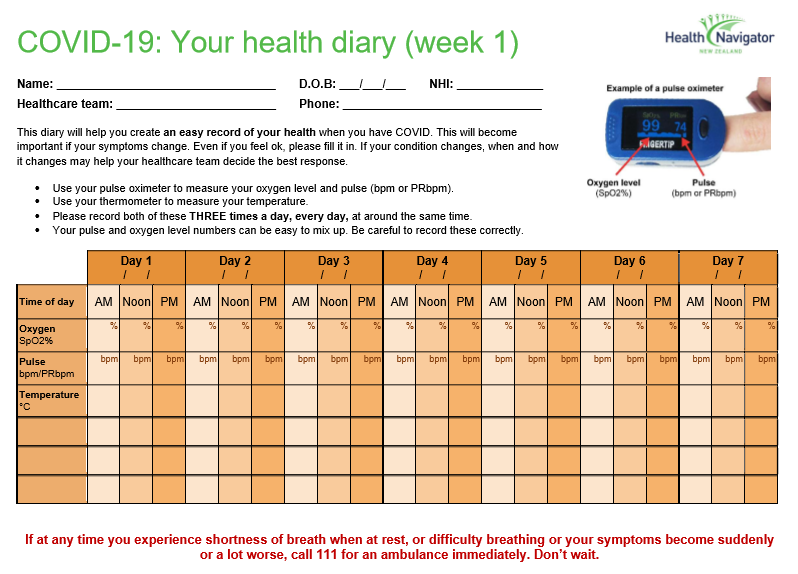
Healthify He Puna Waiora, NZ, 2021
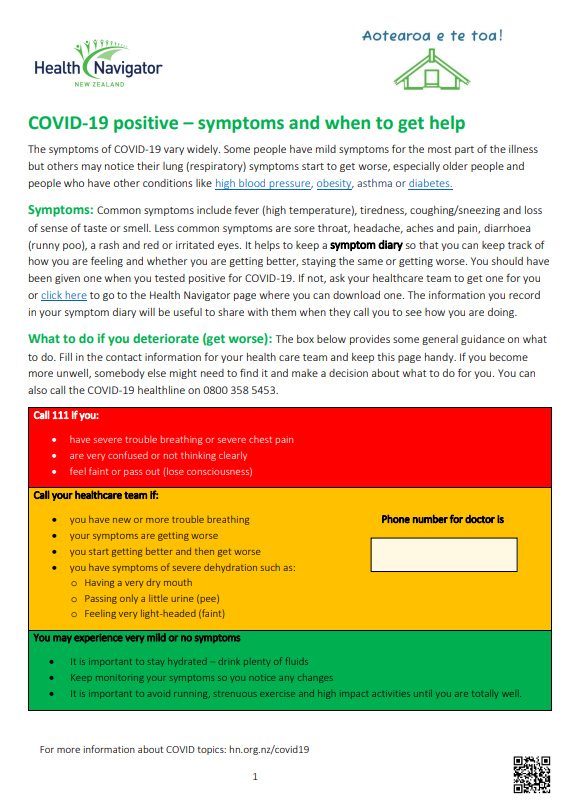
Healthify He Puna Waiora, NZ, 2021
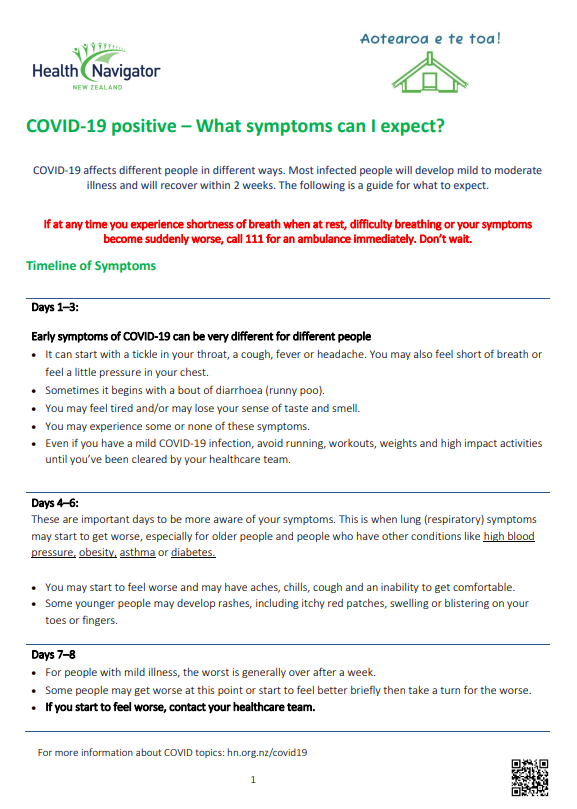
Healthify He Puna Waiora, NZ, 2021
Credits: Healthify editorial team. Healthify is brought to you by Health Navigator Charitable Trust.
Reviewed by: Dr Helen Liley, Auckland Regional HealthPathways Clinical Editor
Last reviewed:
Page last updated:





